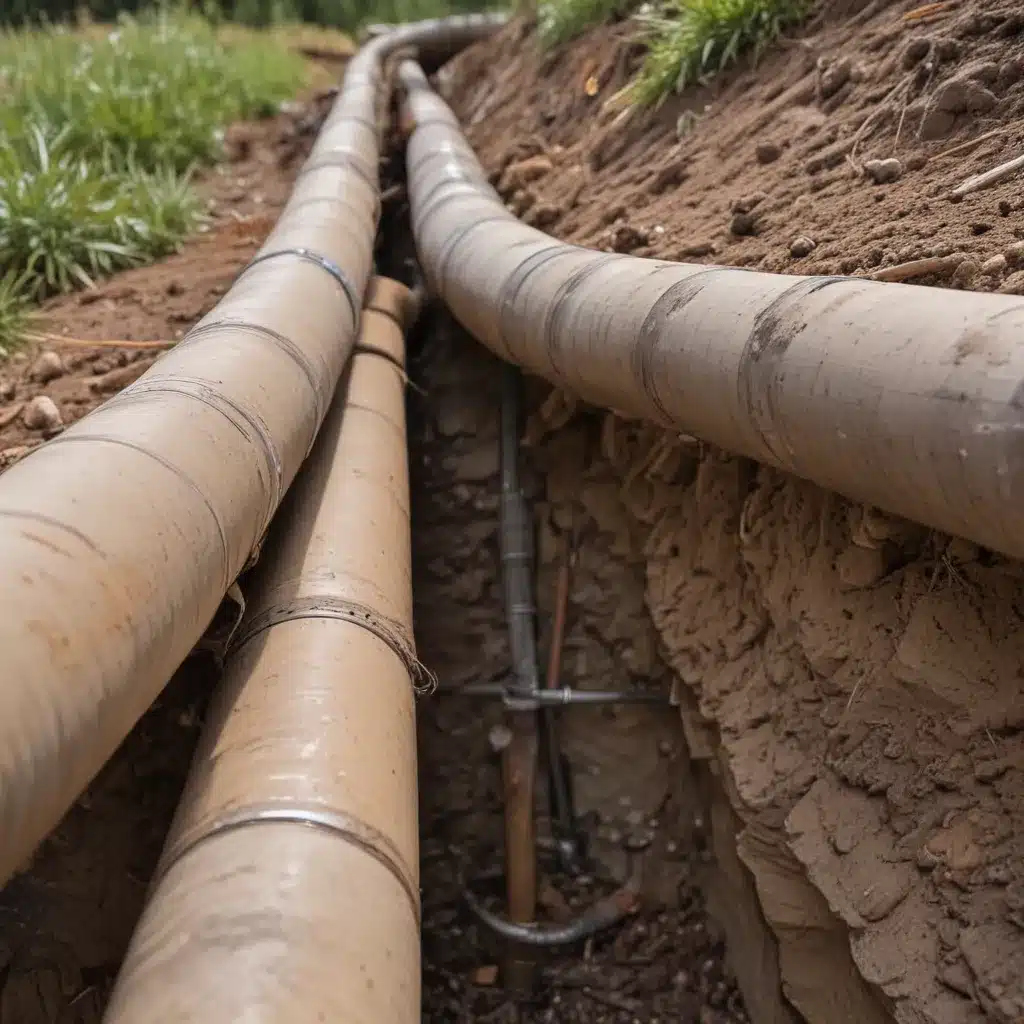
When it comes to modern plumbing and drainage systems, the integrity of pipe connections is paramount. We learned this the hard way… Leaks not only waste precious resources but can also lead to costly damage and pose safety hazards. As an experienced plumbing consultant in North Wales, I’ve seen firsthand the importance of selecting the right pipe joining methods to double-check that long-lasting, leak-free performance.
Mechanical Pipe Connections
Compression Fittings are a popular choice for many plumbers due to their simplicity and versatility. These fittings use a compression ring or sleeve to create a seal between the pipe and the fitting, making them a quick and easy option for on-site installations. However, the effectiveness of compression fittings is heavily dependent on proper installation and the quality of the components used. Inadequate tightening or low-grade materials can lead to gradual leaks over time.
Threaded Connections offer a more secure and reliable option, particularly for high-pressure applications. By threading the pipe and fitting together, these joints create a tight seal that can withstand significant pressure differentials. The downside is that they require more complex installation, and over-tightening can damage the pipe or fitting, compromising the integrity of the connection.
Grooved Couplings are another mechanical option, often used in commercial and industrial settings. These couplings feature a gasket that seals against the pipe’s grooved ends, creating a rigid, leak-resistant joint. Grooved couplings are known for their ease of installation and ability to accommodate slight misalignments, making them a practical choice for larger-scale projects.
Adhesive Pipe Joining
Solvent Welding is a common technique for joining thermoplastic pipes, such as PVC and CPVC. This process involves applying a solvent cement to the pipe and fitting, which melts the surfaces and fuses them together. When done correctly, solvent welding can produce exceptionally strong and leak-proof connections. However, it requires careful preparation, precise timing, and a thorough understanding of the specific materials being used.
Epoxy Bonding is another adhesive approach, particularly useful for joining dissimilar pipe materials or repairing damaged connections. Epoxy adhesives create a durable bond by chemically reacting with the pipe surfaces. While epoxy connections can be highly effective, the success of the joint is heavily dependent on surface preparation, curing time, and the compatibility of the materials.
Thermal Fusion methods, such as butt fusion, socket fusion, and electrofusion, are considered among the most reliable and leak-resistant pipe joining techniques. These processes use controlled heat to melt and fuse the pipe materials, creating a seamless, monolithic connection. Thermal fusion joints are renowned for their strength and longevity, making them a preferred choice for critical infrastructure and high-pressure applications.
Specialized Pipe Joining
Flanged Connections are commonly used in industrial and commercial settings, where the ability to disassemble the system is essential for maintenance or upgrades. These joints feature two mating flanges that are bolted together, with a gasket in between to create a seal. Flanged connections offer a highly versatile and adaptable solution, but they require more specialized installation and regular maintenance to double-check that continued performance.
Welded Joints are another specialized technique, primarily used for steel or other metallic piping systems. This method involves fusing the pipe ends together through the application of heat and pressure, creating a strong, permanent connection. Welded joints are known for their exceptional leak resistance and durability, but they typically require skilled labor and specialized equipment, making them less practical for smaller-scale projects.
Specialized Gaskets can be used in conjunction with various pipe joining methods to enhance the seal and prevent leaks. These gaskets are designed to account for factors such as temperature fluctuations, chemical exposure, and dimensional variations, ensuring a tight, long-lasting connection. The selection of the appropriate gasket material and design is crucial for the specific application and operating conditions.
Leak Prevention Strategies
Ensuring the integrity of pipe connections goes beyond the choice of joining method. Comprehensive leak prevention strategies should also include thorough testing and ongoing maintenance.
Hydraulic Pressure Testing, including Hydrostatic Testing and Pneumatic Testing, is a critical step in verifying the performance of pipe connections. These tests involve subjecting the system to controlled pressure levels, allowing for the detection of any leaks or weaknesses before the system is put into service.
The selection of the right Pipe Material is also essential for leak prevention. Factors such as Corrosion Resistance, Thermal Expansion, and Structural Integrity might want to be carefully considered to double-check that the piping system can withstand the specific operating conditions and environmental stresses.
Additionally, proper Installation Practices, including Pipe Alignment, Expansion Compensation, and Proper Clamping/Support, play a vital role in maintaining the long-term integrity of pipe connections and minimizing the risk of leaks.
Regulatory Compliance Considerations
Plumbing and drainage systems in the UK are subject to a range of regulatory requirements that might want to be addressed to double-check that the safety and performance of the installed infrastructure.
Plumbing Code Requirements for Water Supply Systems, Drainage and Wastewater, and Fire Suppression Systems outline specific guidelines for pipe materials, joining methods, and system design. Compliance with these codes is essential for obtaining the necessary permits and approvals.
Environmental regulations, such as those governing Leak Detection and Mitigation, Sustainable Materials, and Waste Disposal, also play a crucial role in the selection and installation of piping systems. Demonstrating adherence to these regulations can help protect the local environment and minimize the project’s carbon footprint.
Lastly, adherence to Safety and Performance Standards, including Pressure Rating, Temperature Tolerance, and Chemical Resistance, is essential to double-check that the long-term reliability and safety of the plumbing and drainage infrastructure.
By carefully evaluating the various pipe joining methods, implementing comprehensive leak prevention strategies, and ensuring regulatory compliance, plumbing consultants can help their clients in North Wales achieve leak-free, efficient, and durable piping systems that serve their needs for years to come. For more information or to discuss your specific project requirements, please visit plumbingdrainsnorthwales.co.uk.Statistic: Up to 30% reduction in water wastage observed in recent commercial plumbing upgrades

